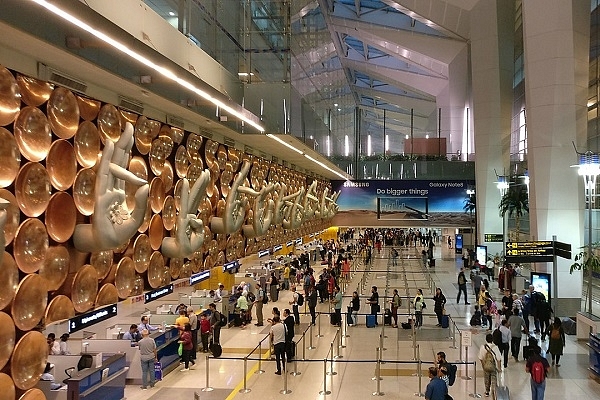
National Infra Pipeline: Aviation To See Capex Of Rs 1.43 Lakh Crore; Focus On PPP Model For Creating World-Class Airports
Rs 1.43 lakh crore will be spent on India’s aviation sector under the National Infrastructure pipeline. Here are the details:
The final report by task force for the National Infrastructure Pipeline released last week has put an ambitious investment target of Rs. 111 lakh crore.
The report highlights that the airport sector is one of the fastest growing segment, while the country has become the third-largest domestic civil aviation market in the world and has immense potential to grow further.
In order to maintain lead positions, it is imperative to augment the existing airport infrastructure and build new world-class airports.
The report highlights the infrastructure deficit at airports. In 2019, the capacity utilisation across the six key airports remained high.
This high capacity is despite a low passenger base compared to global peers.
This also shows the need for capacity augmentation as well as the need for new Greenfield projects like the one approved for Delhi and Mumbai.
The report also highlights the low usage of air transport for ferrying cargo and opportunities for the aviation maintenance, repair and overhaul (MRO) industry.
This is one sub-sector that has immense potential but high tax is hampering its growth.
The report has earmarked total capital expenditure of Rs 143,448 crore to be incurred by both the Centre (62 per cent) and State governments (38 per cent) between FY20 and FY25.
For projects to be executed by the Centre, about 58 identified projects will be implemented in the period.
The capital expenditure for these projects is estimated at Rs 89,167 crore. Out of the 58 projects, 52 projects worth Rs 37,188 crore are to be implemented through EPC mode and 6 projects worth Rs 51,980 crore are to be implemented through PPP mode.
There are 8 completely Greenfield projects with a capex of Rs 36,147 crore, while 50 projects are for expansion and modernisation of existing airports with a capex of Rs. 53,020 crore.
The greenfield projects include: construction of new airports at Navi Mumbai, MOPA (Goa), Jewar, Itanagar, Bhogapuram, Dholera (Gujarat), Agatti and Rajkot.
The upgradation and modernisation to improve passenger amenities will be carried out at several existing airports such as Chennai, Trichy, while expansion work is being taken up at Delhi International Airport and Bangalore International Airport.
Bringing in policy reforms
The task force has highlighted some key policy reforms that can transform the sector coterminous with its growth and potential.
Some key reforms include:
- Aerotropolis approach – There is an urgent need to take a holistic view of the airports per se. New airports should be developed as part of a planned ‘aerotropolis’ than a mere plot of land, where aircraft land and take off. These hubs obtain a significant part of their revenue from cities situated in their catchment areas, as they are complemented by multi- modal transport infrastructure, which allow ease of access for passengers and cargo. The task force recommends this approach for developing Jewar Airport near Delhi, where an integrated transport hub could be developed.
- Hub-development: This is a global model where fiscal, monetary and procedural benefits are provided to all carriers that venture into international routes. A hub-and-spoke model would be useful for Indian carriers
- Transhipment: There is a need for reforms for transhipment cargo with respect to customs, safety and security procedures. The entire value chain needs to be engaged, especially the logistics companies
- Developing MRO hub: there is immense potential for India to develop as a maintenance, repair and overhaul (MRO) hub. This can be a valuable gateway between the Middle East and the Asia Pacific. Growth in the segment is boosted by the expansion and development of new airports, a liberal foreign direct investment policy, rising adoption of new technology and focus on regional connectivity.
- Private investments in airport sector: The PPP mechanism has created world-class airports in India and generated large financial resources for the government with better operational efficiency and risk management. There is immense scope to provide viability-gap funding (VGF) or grants for PPPs in smaller cities, where revenue and traffic risk could potentially be higher to improve private sector participation.
Lastly, investment in technology, leveraging technologies like the Digi Yatra Biometric Boarding System, deploying smart cameras and re-positioning of security apparatus at all airports, adoption of latest air traffic management systems and benchmark airport handling capacity and productivity to international standards should be focus areas.
The report highlights that the Indian aviation sector has already become the third-largest domestic aviation market in the world during 2018.
There is a need sustain the growth momentum. However, the sector faces headwinds in terms of intrinsic and extraneous risks, such as volatility in oil prices and exchange rates.
Therefore, it is imperative that the reform momentum should continue to provide a conducive environment for growth.